Kathy Knaus’ cake that looks like the interior of a public library. You can see all her cakes on her facebook page
Kathy Knaus’ cake that looks like the interior of a public library. You can see all her cakes on her facebook page
The September word for my prompt challenge group was “derived.” I decided to look at the definition “originate; come or descend from” and work on some ideas for my artist in a matchbox series. This is the first one, based on Emily Dickinson, the mid-19th century American poet. She didn’t publish much during her lifetime, and when she died, her sister found hundreds of poems in Dickinson’s bedroom desk. Some were copied neatly into little pamphlets, but many were written on scraps of paper, old envelopes, as well as the margins of letters and newspapers. My little box contains all those things.
Ines Seidel’s fairy bundles—knots and bundles and such from fairy tales. Much more of her work here
In my bookmaking, I keep coming back to this poem by Emily Dickinson
Bee! I’m expecting you!
Was saying Yesterday
To Somebody you know
That you were due—The Frogs got Home last Week—
Are settled, and at work—
Birds, mostly back—
The Clover warm and thick—You’ll get my Letter by
The seventeenth; Reply
Or better, be with me—
Yours, Fly.
Last year I started to make a tunnel book based on the poem, but didn’t get very far. Recently I revisited the book. Here’s the first version. It’s constructed by placing 5 panels between 2 accordion-folded strips (instructions here). The strips make up the sides of the book. It’s a matchbox book, so it’s small—1-3/8″ wide by 2″ tall.
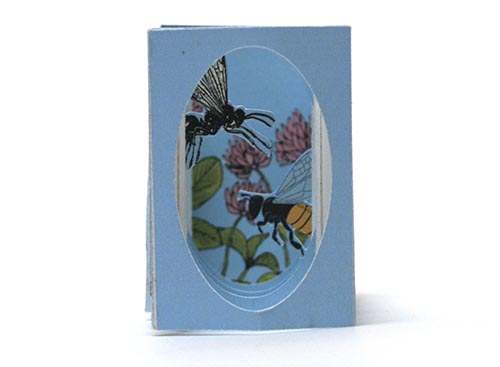
I put the poem on the sides, in the accordion folds.
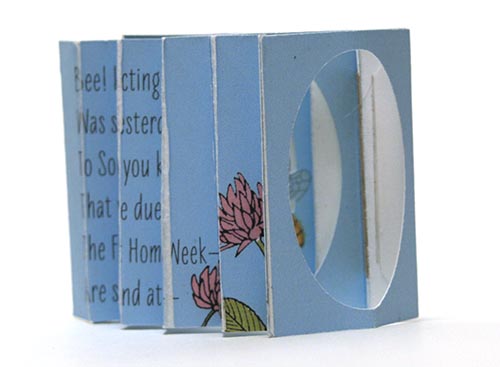
Two problems with this version. First, the poem is hard to read. Second, I printed the side accordion on white paper, which cracked when I folded it, showing the white core. So I tried using blue paper.
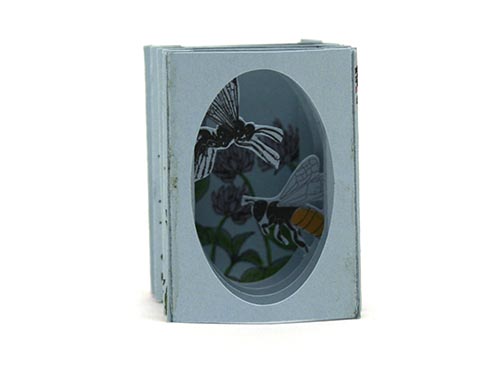
The blue is a lot darker, almost a gray blue, so the printing colors are dull (it’s printed on my Epson inkjet). There’s not as much light inside the tunnel because the paper is blue on both sides. For the poem, I tried turning it 90 degrees and made the type darker…
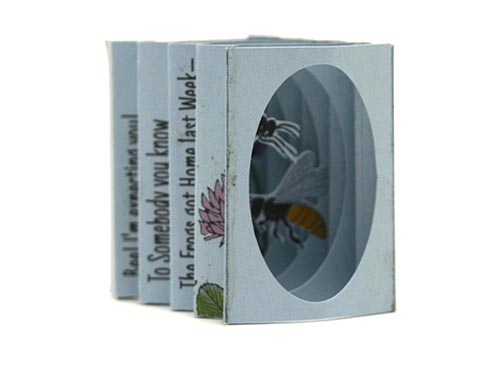
But now only every other line of the poem is visible, with the odd lines hidden in the accordion fold, so that didn’t work! Next I looked for a brighter blue paper. I found one, and used it for the accordion sides. I printed the panels inside the tunnel on white paper, hoping the blues wouldn’t be too different. This would keep some white on the paper facing the inside of the tunnel, to provide more light. I also added slits in the accordion sides. I put just half the poem on the sides—on the folds facing the viewer.
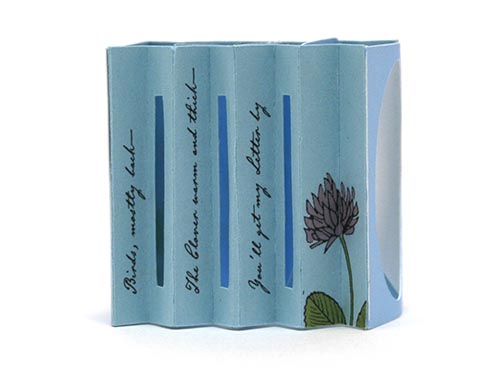
Here’s another shot of this test. The poem placement is better, if I used a different font it might really be readable (that’s an 19th century handwriting font in this test)
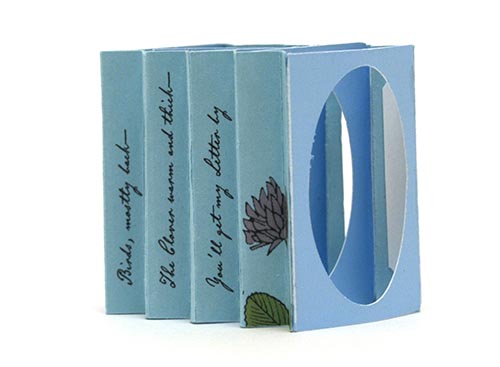
But where to put the rest of the poem? Only half of it fits on the 2 sides. I tried putting it on the top of the matchbox sleeve. Then I showed the book to several people who all said the poem actually wasn’t readable on the sides. So I tried the back of the book
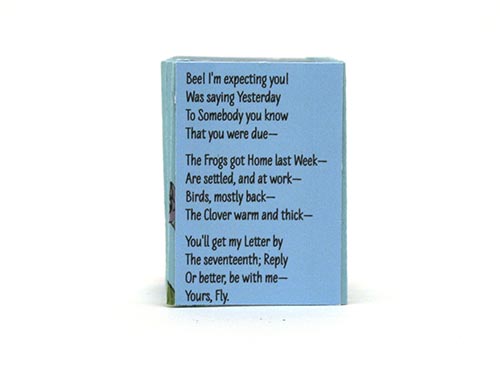
That allowed me to put an envelope on the matchbox sleeve, since the poem is a letter. And I changed the sides to have clover. (I tried putting the the poem in the envelope, but it’s awfully tiny and hard to get the sheet out of the envelope.)
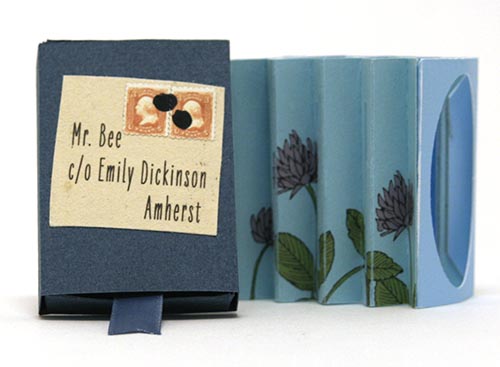
Here’s the current state of the tunnel—the fly and bee need work (with prototypes, sloppy cutting is allowed!). And how will the viewer know the poem is on the back of the book? That’s when I realized that the poem can go in the bottom of the matchbox, so the viewer sees it when she removes the tunnel book. So that’s what I’m going to try next.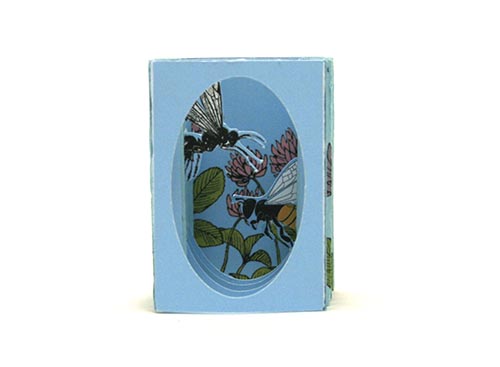
I’ve got a table at Oak Knoll Fest, Oct 4-5, in New Castle Delaware. If you’re in the area, please stop by and say hello.
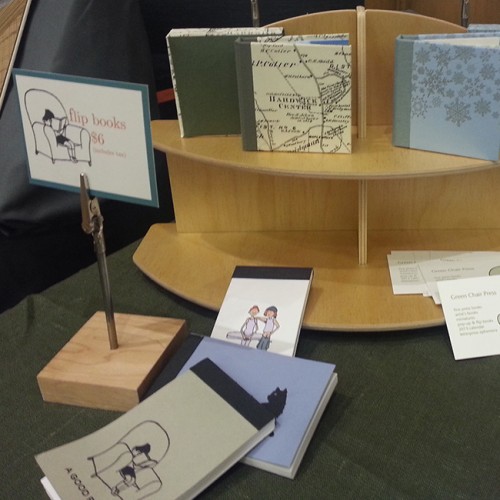
Today is the last day of Banned Book Week, celebrating the freedom to read. Below is my matchbox about banned books. Find out more about Banned Book Week here.